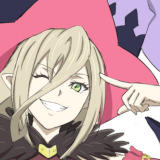Writing 101: Creating Characters; Utilizing Archetypes · 10:41am Jul 31st, 2018
One of the strange things about fanfiction is that its characters are premade. There is often no need to create original characters, because the show provides so many for authors to utilize. But all characters use the same building blocks. Writing a character in fanfiction is not that different from making characters of your own. For today’s post about writing, I’d like to discuss one of the fundamental building blocks of character: the archetype.
First, we must establish what an archetype is. TVTropes describes an archetype as a theme, story, or character which is so universal that it can never become cliché. Wikipedia describes it as a “constantly recurring motif.” Essentially, an archetype is just that: the essentials. It is the fundamental building block of a character, the idea that all the other parts and quirks are based around.
You know what an archetype is, and what many of them look like, just from consuming fiction. Pinkie Pie is the energetic party girl and the Pollyanna. Obi Wan Kenobi is the old master. Batman is the hero who uses gadgets. Sherlock Holmes is the master detective. But to describe them in just those terms is not the whole character. It is not inaccurate, but it doesn’t give you the full picture.
Characters who are just archetypes tend to be boring, two-dimensional, even bland. An archetype is merely the first step. A character isn’t a real character until you have layered things upon that archetype: motivations, quirks, ideals, morals, backstory, even other archetypes.
I don’t like using my own work as an example of good practice, but I’m not familiar enough with anything else to use instead. I’m currently working on a novel that is about a princess who is a werewolf, but played as a serious character piece where she has to deal with xenophobia and political infighting.
Already, we can see the archetype(s) she represents: the Beast from Beauty and the Beast, The Frankenstein-style reluctant monster, the outcast put in a position of power. The high queen who has to deal with the difficult decisions that leadership represents. But as above, these don’t give the whole story.
What’s her backstory? (Her parents exiled her.) How does she speak? (Gruffly and brusquely.) What does ‘werewolf’ mean in this setting? (She doesn’t transform, but has wolf features and better senses.)
Archetypes are like the canvas that you paint upon, the base coat, the foundation. What you put on them can be as varied and complex as you like, but they are the starting point that defines your characters. Every detail you place on top of that archetype makes your character more rounded and interesting.
Archetypes provide consistency. They allow your readers to have some expectations about a character’s goals and role, but are not so restrictive that you can’t subvert them.
When you are designing characters, think about what archetype(s) they represent. And use those archetypes to help lead you to other aspects of their personality and story. But always remember that archetypes don’t mean anything by themselves, just like an empty canvas or base coat doesn’t.



Thanks for the primer!